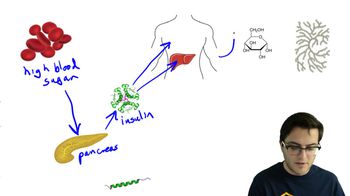Textbook Question
Why did separate systemic and pulmonary circulations evolve in species that have the high-pressure circulatory system required for rapid movement of blood?
728
views

 Verified step by step guidance
Verified step by step guidance Verified video answer for a similar problem:
Verified video answer for a similar problem:



 6:28m
6:28mMaster Gas Exchange and Circulation with a bite sized video explanation from Jason
Start learning